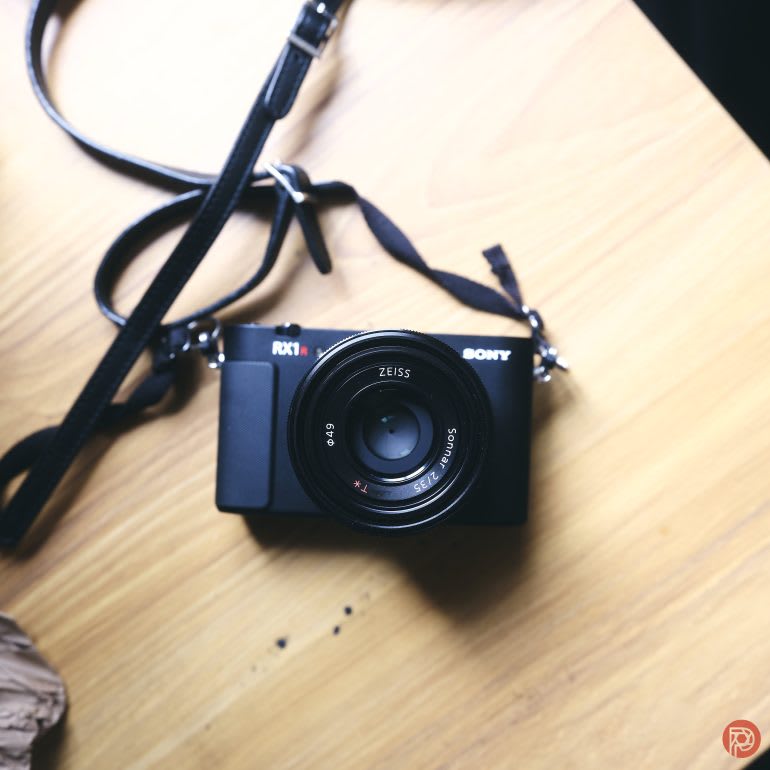Sony RX1R Mk III: A Deep Dive Review
Sony’s RX1R series has always held a special place in the hearts of photographers who appreciate a compact, high-quality camera. The promise of a full-frame sensor in a pocketable body is undeniably appealing. The RX1R Mk III arrives with a 61.1MP sensor paired with a lens that has been around for over a decade, a combination that offers a unique character. But does this long-awaited camera live up to the hype and justify its premium price tag?
- 0.1 Sony RX1R Mk III: A Deep Dive Review
- 0.2 First Impressions: Size and Feel
- 0.3 Key Features
- 0.4 Battery Life: A Major Drawback
- 0.5 Weather Resistance: A Notable Omission
- 0.6 Autofocus Performance: Good, But Not Perfect
- 0.7 Image Quality: A Standout Feature
- 0.8 Handling and Ergonomics
- 0.9 Lens Characteristics
- 0.10 Tech Specs
- 0.11 Alternatives to Consider
- 0.12 Conclusion
First Impressions: Size and Feel
One of the most immediately noticeable aspects of the RX1R Mk III is its size. It is remarkably compact, making it a genuinely pocketable camera that you can easily carry with you everywhere. This is a significant advantage for street photographers, travelers, or anyone who wants a high-quality camera without the bulk of a larger system.
Key Features
- 61.1MP Full-Frame Sensor: Delivers exceptional image quality with high resolution and dynamic range. An anti-reflection coating is also present.
- BIONZ XR Processor: Ensures fast and efficient processing of images and videos.
- 35mm f/2 Zeiss Sonnar T* Lens: A classic lens design known for its sharpness and pleasing bokeh.
- AI Processing Unit: Enhances autofocus performance, similar to higher-end Sony Alpha cameras.
- 693 Phase Detection Autofocus Points: Covers approximately 78% of the image area, providing fast and accurate focusing.
- Close Focusing: 20cm minimum focusing distance.
- Creative Looks: 12 built-in creative styles for easy image customization.
- Electronic Viewfinder: 2.36 million-dot XGA OLED electronic viewfinder.
Battery Life: A Major Drawback
Unfortunately, one of the most significant drawbacks of the RX1R Mk III is its poor battery life. It utilizes the same battery as the original Sony a7, a battery that was not particularly impressive even back then. Compared to other cameras on the market today, the battery life falls short.
Many other cameras offer significantly better battery performance. For instance, the Nikon Zf can last for nearly a week, and the Leica SL2s with its updated battery provides exceptional longevity. Even the LUMIX S series cameras can typically handle an entire gig without requiring multiple battery changes.
The lack of weather resistance exacerbates the battery issue. Environmental factors can further drain the battery, making it even more unreliable in challenging conditions.
Weather Resistance: A Notable Omission
The absence of weather resistance is another significant concern. In unpredictable weather conditions, you might hesitate to take the RX1R Mk III with you. This limits its versatility and makes it less suitable for adventurous photographers who often shoot in diverse environments.
Autofocus Performance: Good, But Not Perfect
The autofocus system of the RX1R Mk III performs well in good lighting conditions. It’s quick and accurate, allowing you to capture sharp images in most situations. However, in low light, the autofocus performance can struggle, especially when it’s difficult to see the subject clearly.
Image Quality: A Standout Feature
Despite its shortcomings, the RX1R Mk III excels in image quality. The combination of the 61.1MP sensor and the Zeiss Sonnar lens delivers stunningly detailed and vibrant images. The camera also offers beautiful film simulations that add a unique aesthetic to your photos. The images have a distinct character that many photographers will find appealing. In fact, the camera produces JPEG files so good that you might not even feel the need to edit the RAW files.
Handling and Ergonomics
The RX1R Mk III is designed for experienced photographers who understand the fundamentals of photography. The lack of image stabilization encourages you to rely on proper technique and shooting habits. This can be a refreshing change for photographers who have become overly reliant on technology.
The camera’s compact size and intuitive controls make it a joy to use. It’s a camera that encourages you to slow down, think about your composition, and capture images with intention.
Lens Characteristics
The 35mm f/2 Zeiss Sonnar T* lens is a key element of the RX1R Mk III’s appeal. It’s a lens with a classic design that produces sharp images with pleasing bokeh. While some may find the “onion ring” bokeh distracting, others may appreciate its unique character.
Tech Specs
- Sensor: 61.1MP full-frame sensor
- Processor: BIONZ XR
- Lens: 35mm f/2 Zeiss Sonnar T*
- Autofocus: 693 phase detection points
- EVF: 2.36 million-dot XGA OLED
- Price: $5,098
Alternatives to Consider
Given the RX1R Mk III’s price and limitations, it’s worth considering alternative cameras that offer similar or better performance. The Leica Q3 and Fujifilm GFX 100RF are two excellent options that provide superior image quality and weather resistance. The LUMIX S9 is another alternative for those who need image stabilization.
Conclusion
The Sony RX1R Mk III is a camera with a lot of potential, but it falls short in some key areas. Its poor battery life and lack of weather resistance are significant drawbacks that limit its versatility. However, its compact size, exceptional image quality, and unique character make it an appealing option for experienced photographers who appreciate a classic shooting experience. Ultimately, whether or not the RX1R Mk III is worth its high price tag depends on your individual needs and priorities.


